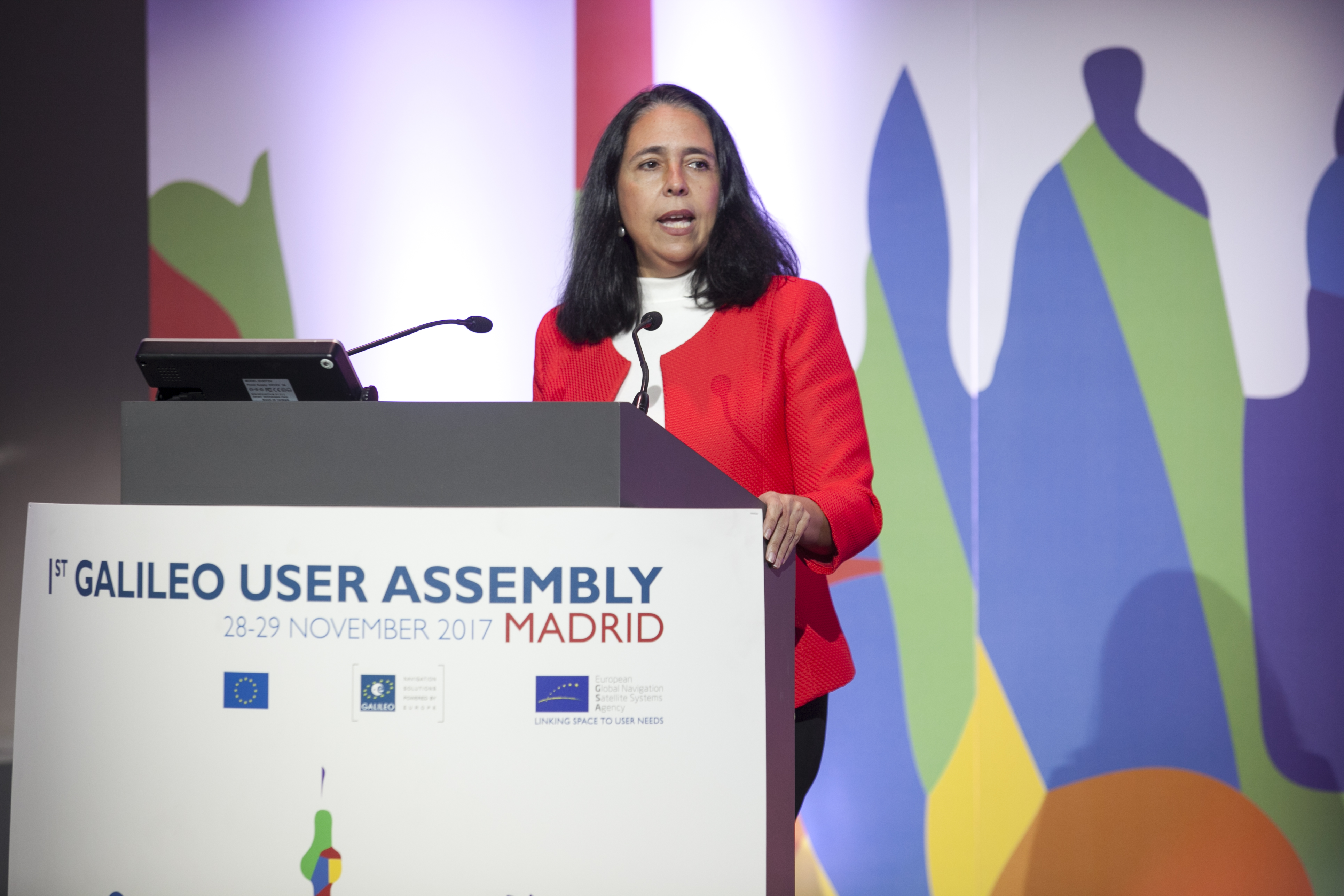The Assembly had three main parts together with ample opportunities for the Galileo user community to network.
The launch of the Galileo User Consultation Platform and a visit to the GSC itself were complemented by the first Galileo Service Provision Workshop. This had its main session on the morning of 29 November and presented the observed performance of the system over its first year of service operation and plans for the evolution of the services.
Service provision workshop
The first ever Galileo Service Provision Workshop was opened by Flores Diaz Pulido from European Commission DG Grow. She had worked with Commissioner Loyola de Palacio in the early years of Galileo and was happy to see that Galileo was now a functioning reality.

Flores Diaz Pulido of the European Commission opens Day 2 plenary
Rodrigo da Costa, Galileo Services Programme Manager at the GSA, updated users on the status of the Galileo Services and the GSA. Currently, Initial Services are provided to users around the globe, with relevant information to the users published on the GSC website in real time and detailed performance of Open Service and Search and Rescue Service provided quarterly.
In addition, new ground infrastructure was in place across Europe including the Galileo Reference Centre in the Netherlands, The Galileo Search and Rescue (SAR) Centre in Toulouse and the Galileo Integrated Logistics Centre that opens 1 December in Belgium, he noted.
He also anticipated the launch of enhanced services and activities on high accuracy and authentication.
The actual performance of Galileo during Initial Service was described by Alberto Madrazo of the GSA. Overall the system had displayed high signal availability, excellent ranging accuracy – managing an average ranging accuracy during August of 0.3 metres, and a timing accuracy averaging at 9.3 nanoseconds. This compares to the Initial Services target of 30 nanoseconds. In general, the performance of the system was consistently far exceeding its defined minimum performance levels.
“The performance of Galileo, with its partial constellation and less than one year’s operational experience, is already at least as good as GPS, with its full constellation and 25 years operational experience,” claimed Madrazo.
In terms of the future he saw that the trends showed “continuous improvement that will pave the way to enhanced services.”
Reference measure
Peter Buist, Manager of the Galileo Reference Centre (GRC), also supported the quality of Galileo’s performance. The role of the GRC is to provide independent performance monitoring of Galileo and other GNSS with reporting based around a set of key performance indicators (KPIs). The GRC represented a fully independent system based at Noordwijk in The Netherlands and also receives monitoring data from other Member States.
“The GRC helps ensure that Galileo users are provided with very high-quality signals for use with an array of new navigation applications,” said Buist.
The GRC has also been nominated by the European Commission to act as the European Monitoring and Analysis Centre for Galileo as part of a joint United Nations project monitoring GNSS.
Alvaro Mozo, GSA’s Galileo Service Engineering Manager declared that “Galileo is here and working well but challenges remain.” He gave an overview of the next steps to improve the services, which rely on continuous monitoring,
further infrastructure deployment and validation campaigns, while assuring service continuity at the same time.
Closing the Assembly, Flores Diaz Pulido praised the innovative, thorough and committed nature of the event participants. “The two days have exceeded my expectations,” she said. There was still much work to be done,
but she was “sure that with Galileo in your hands – all of you - it will be a success.”
For news, images and presentations from the Galileo User Assembly, click here.
Media note: This feature can be republished without charge provided the European GNSS Agency (GSA) is acknowledged as the source at the top or the bottom of the story. You must request permission before you use any of the photographs on the site. If you republish, we would be grateful if you could link the article back to the GSA website (http://www.gsa.europa.eu).